What are artichokes, cultivation and benefits
The artichoke is a fairly rare guest on personal plots in our country. The plant is perennial, belongs to the Astrov family. Native to the Mediterranean, the artichoke is also found in the Canary Islands. Recently, artichokes have been cultivated in California, Europe, South America, North Africa. The plant with a long, straight stem resembles a thistle and can be mistaken for a weed.
Content:
- Reproduction of artichokes by shoots
- Growing seedlings
- Planting artichokes
- Artichoke care
- Seeding and harvesting
- Useful properties of artichokes
Reproduction of artichokes by shoots
You can propagate an artichoke seeds or using root layers. Seeds are sold in stores, root shoots cannot be bought, since nurseries do not grow seedlings.
Reproduction by layering:
- Young shoots form around the root of a perennial artichoke after two years. After the appearance of three leaves, the shoot can be carefully separated and transplanted into the soil.
- This should be done with care so as not to damage the adult plant and the layers. To do this, at a distance of 20 centimeters from the layering, they dig a hole about 25 cm deep so that the root system is not exposed.
- Then the process is cut off. If the distance between the shoot and the plant is small, the separation should be done along the stem. In this case, the sections must be treated with a root growth stimulant.
- If the plant is dug up and stored in the basement in winter, it is easier to get the shoot. Separate a 15 cm root from the root system, treat with a horse growth stimulant and place in a box with sawdust to a depth of about 15 cm. Use sawdust from fruit trees. They must be kept moist at all times until sprouting.
- After the sprout appears (after six to seven weeks), you need to cover it with a jar. The jar can be removed when the sprout leaves are about 5cm long.
- Water and spray the sprouts regularly, you do not need to feed, everything you need for growth is at the root.
Growing seedlings
Annual artichokes are grown using seedlings.
How to Grow Artichoke Seedlings Using Seeds:
- Seeds need to be wetted and germinated in a warm room (temperature 20-25 degrees) in February or, at the latest, in March.
- They are placed in a damp cloth so that they do not touch each other.
- Then the seeds should be placed in a cool place for ten to fifteen days (0-1 ° C). This procedure is called vernalization.
- After the roots appear, at least ten percent of the seeds are placed in the refrigerator.
- Seeds prepared in this way are placed in seedling containers.
- The seedling soil should consist of equal parts of peat, turf and humus.
- Add a complete complex mineral fertilizer to it along with dolomite flour (a tablespoon per bucket of soil).
- The day before transplanting water the earth.
- Plant the seeds it is necessary in the furrows made with an interval of 4 cm, to a depth of about one and a half centimeters and at a distance of 2 cm from each other.
- The spines should be horizontal.
- Sprinkle with earth and cover with plastic wrap. There is no need to water. Remove the film when the sprouts sprout.
You need to grow seedlings at a temperature of 10 - 15 degrees, to water regularly with warm water. When the first leaves appear (after about a month), the plants are transplanted into large containers (dive).
After picking, after 14 days, the plants must be fed with a non-concentrated solution of a complex mineral (half a teaspoon per 5 liters of water) or organic (BIUD based on cattle manure in a ratio of 1:20) fertilizer. Z
and two weeks before planting in the soil, seedlings (and sprouts when propagated by shoots) begin to harden.
To do this, artichokes are put on a loggia or balcony for 2 hours, every day the period of stay in a cool atmosphere is increased. The seedlings grown in this way can be planted in the ground when the heat comes.
Planting artichokes
The soil for the artichoke must be prepared in advance - well fertilized. You need to prepare a seat in the fall in several stages:
- Dig up the ground to a depth of 35 cm.
- Remove all weeds thoroughly.
- Remove the soil layer on a shovel bayonet and set aside.
- Remove another layer.
- Put compost at the rate of 8 kg per 1 sq. M.
- Fill up the trench.
If the soil is acidic, with the onset of cold weather, slaked lime should be scattered on its surface - 350 g per 1 sq.m. This will raise the pH level. Artichoke grows comfortably in soil with a pH of 6.5 - 7.5. In the spring a week before planting seedlings it is necessary to dig up the ground, fertilize with complex mineral fertilizer (at the rate of 100 g per 1 sq. m) and level it with a rake. Any complex fertilizer can be used.
On loamy soil, try to plant seedlings as soon as possible after digging, as the loam dries quickly.
The artichoke loves light and warmth, it is best to plant it along the fence on the sunny side. The fence will serve as a good wind protection. And, since the plant grows up to 2 meters, it will be fine here, and the inflorescences will grow large.
Make planting holes with an interval of 70-90 centimeters. Pour a handful of ash, 0.5 kg of humus into each hole, move with the ground and water well. It is necessary to plant seedlings with a clod of earth to a depth of five centimeters more than it grew. Drizzle. With this planting, the artichoke will not degenerate for a long time. If frosts are expected, the plants should be covered.
Artichoke care
Until the plants take root, the soil should be kept moist at all times. After rooting, keep the humidity at about 75%. If this is not done, the plants grow worse, the inflorescences become small, and the receptacle coarsens. At the same time, do not let the water stagnate. When the inflorescences appear, watering can be reduced.
Artichokes love good drainage, so you need to loosen the soil frequently.
In order not to avoid the formation of a crust, be sure to glaze loosen the soil the next day. Do it carefully and shallow near the plants themselves. Do not neglect weeding, weeds greatly interfere with the full growth of plants.
Top dressing artichokes:
- When feeding artichokes, it is best to use organic and mineral fertilizers alternately.
- It is recommended to do this three to four times.
- The first time is two weeks after landing, the rest with an interval of ten to twelve days.
- Use ash as mineral fertilizers (half a liter jar per 1 sq. M) or kemiruniversal (50 g per bucket of water), as organic fertilizers mullein (solution 1:10) or BIUD based on cattle manure (1:20).
It is also important to nourish the plants with a spray method. For such spraying, special solutions are taken containing 10 g of potassium chloride, 10 g of wood ash and 25 g of superphosphate per 10 liters of water. It is enough to spray once a month.
To make the inflorescences larger, leave two or three peduncles on the plants and three to four inflorescences on them. When they are about half their size, the stems underneath should be punctured.
The artichoke has three main enemies:
- Rot
- Aphid
- Slugs
If brown spots appear on the petals, act immediately.This is rot, which can cause fusarium disease, and the inflorescences will die. The affected inflorescences must be removed immediately and burned. Spray the plant with fungicides. In case of aphid infestation, treat the plant with agents to combat pests (for example, Fufanon). To avoid slugs eating up the artichoke shoots, place slug pellets next to the plants.
Seeding and harvesting
If you want to assemble yourself the seeds artichoke, do not cut the inflorescences and leaves. After ripening, when the leaves and stem dry up, you can cut the seed baskets. Spread them out in the shade and dry for 10 days. Seeds that fall well out of the pods are good for planting. Clean them of debris, dry them slightly and store in bags at room temperature.
Seeds retain their germination property for about six years.
If, when preparing seedlings, you did vernalization, you can harvest the crop in the first year. When the tip at the top opens slightly, the artichokes can be harvested. Inflorescences bloom at different times, so you need to collect them separately each. Do not let the plant bloom completely. This leads to coarsening of the heads, and they become unfit for human consumption. If blue leaves appear at the top, the fruits can no longer be eaten.
You can store artichokes for two to three months at temperatures from 0 to +1 degrees. While artichokes take a lot of time and care, their health benefits are enormous. You won't regret growing them.
Useful properties of artichokes
What is the secret of such an extensive geographic distribution of artichokes? It's all about their amazing properties. Artichokes are very nutritious and delicious. In their composition, artichokes contain vitamins A, E, C, group B, P, as well as carotene, inulin and organic acids such as caffeic, chlorgenic, glycolic, quinic and glycerin.
They contain a huge amount of minerals - these are magnesium, phosphorus, calcium, potassium, selenium, iron, zinc, copper.
Artichokes help well in cleansing the body of toxins, have a diuretic and choleretic effect. They are well absorbed, low in calories and are rightfully considered a dietary product. Due to their composition, artichokes normalize metabolism, lower cholesterol levels, cleanse the liver well, and have a beneficial effect on the vascular system.
They eat young cones-inflorescences that have not yet opened. They can be used raw; older fruits must be processed. Although this is rare enough vegetable on our table, it has already established itself as a fairly useful product.
More information can be found in the video.



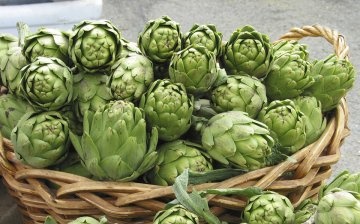
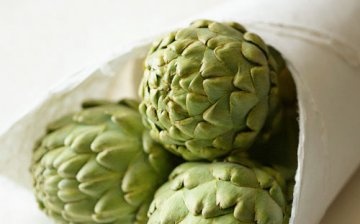
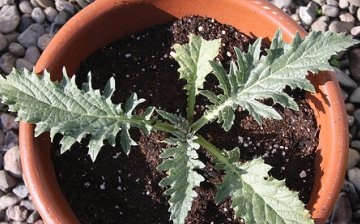
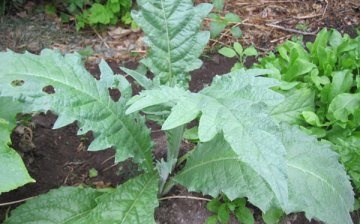
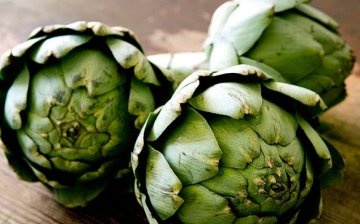
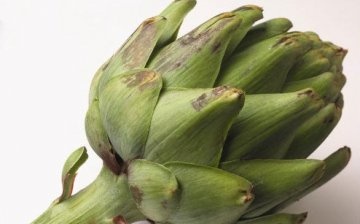
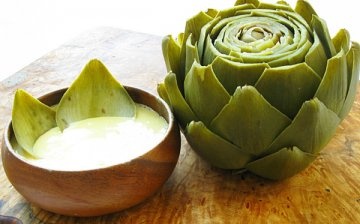







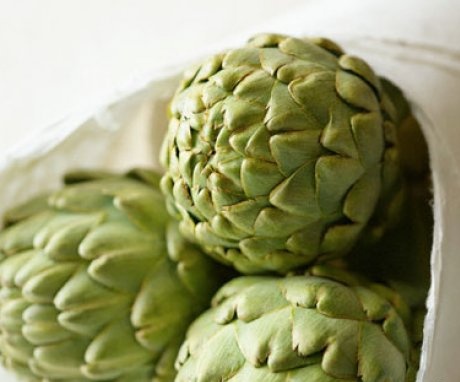
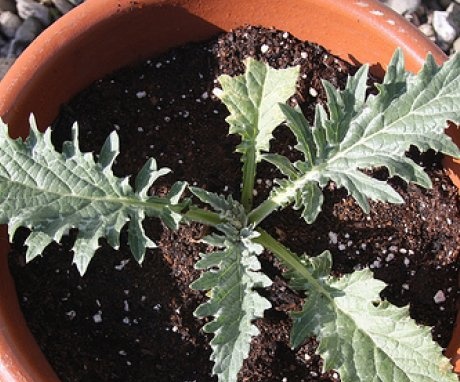
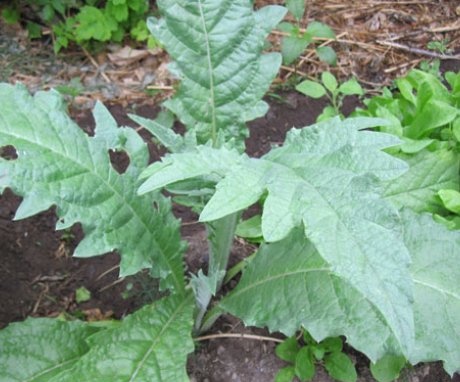
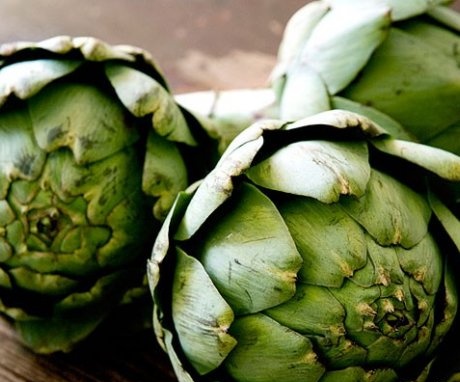
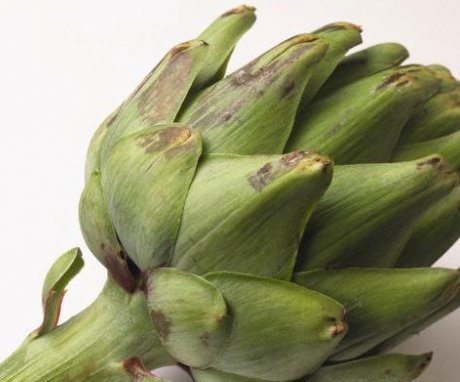

For the sake of interest, 3 years ago I tried to grow artichokes from seeds, it worked. In the first year, no inflorescences were formed, but the next year, about 8 pieces were removed from each plant. The taste of artichokes is closer to neutral than it resembles green peas. Plants overwintered under a layer of dry foliage, covered with foil. The ants on the plants were apparently invisible, I tried to poison them (sprinkled the soil with an Anteater with burying), but it was useless.